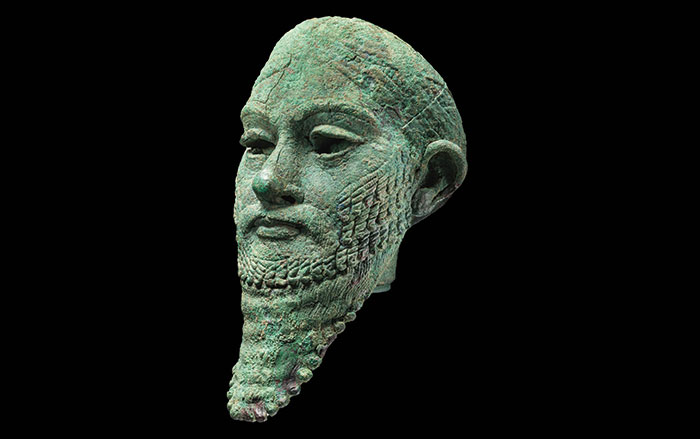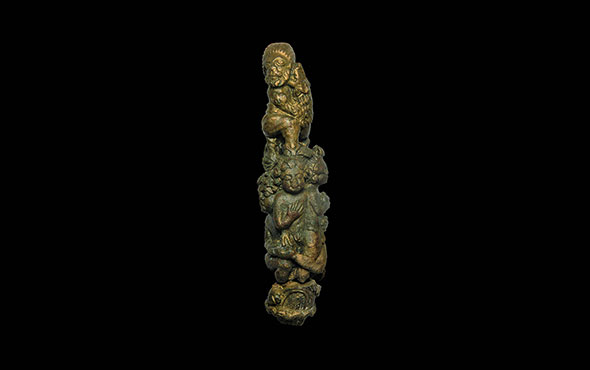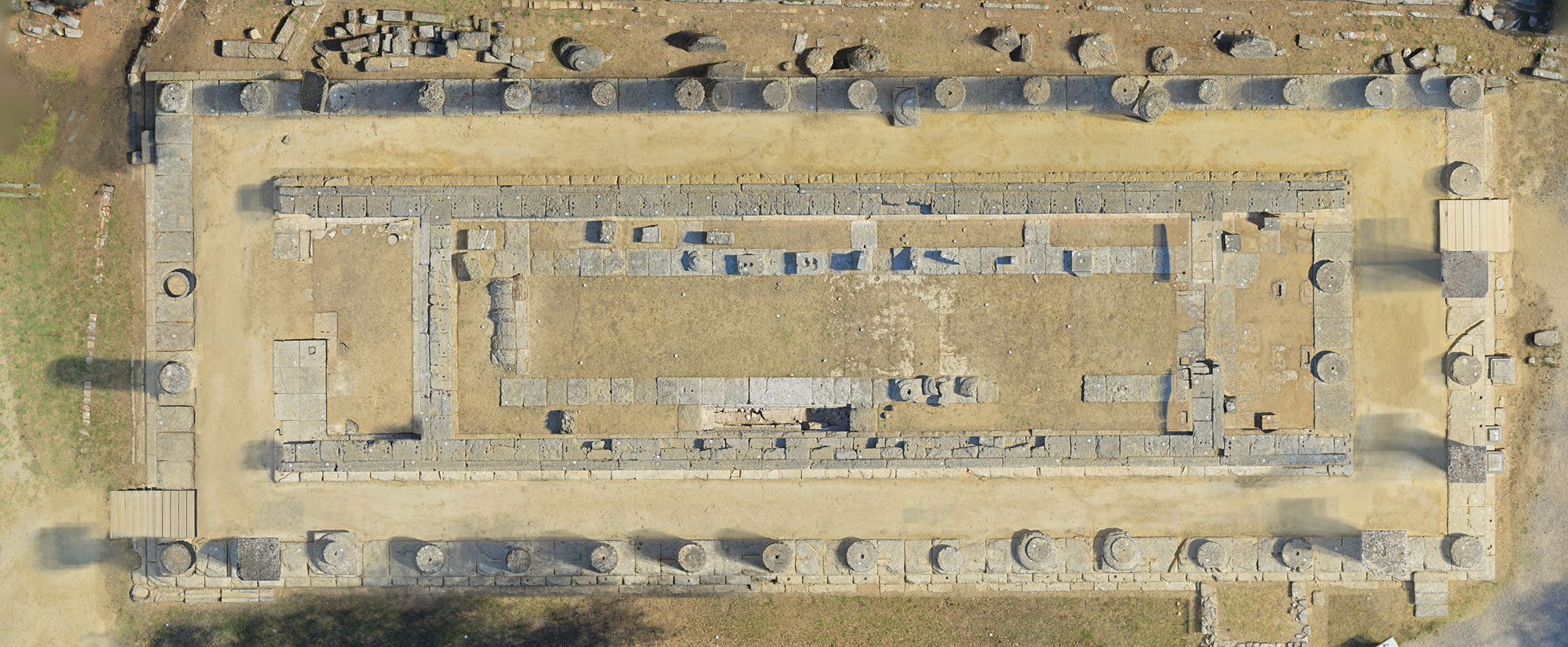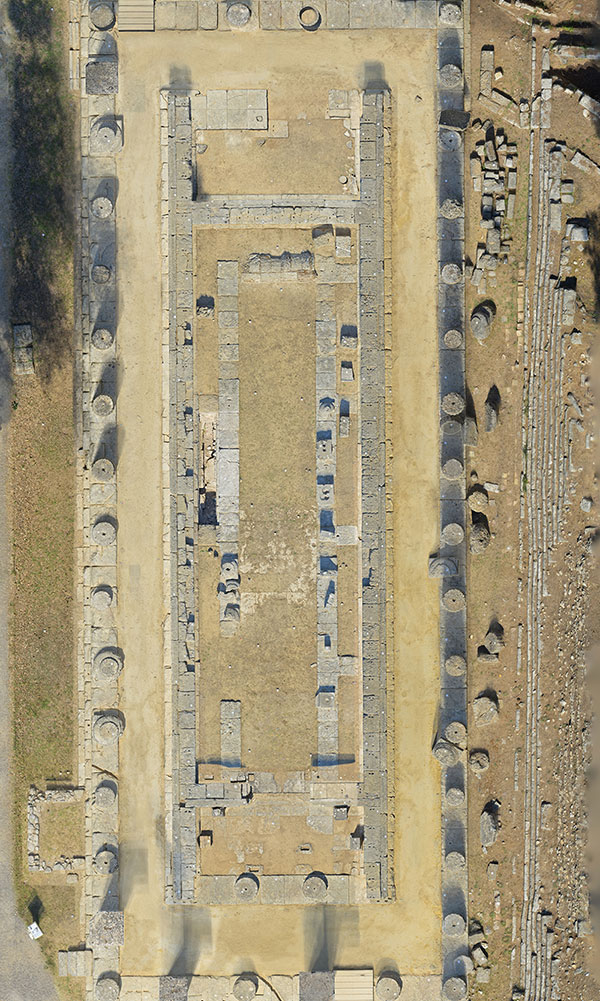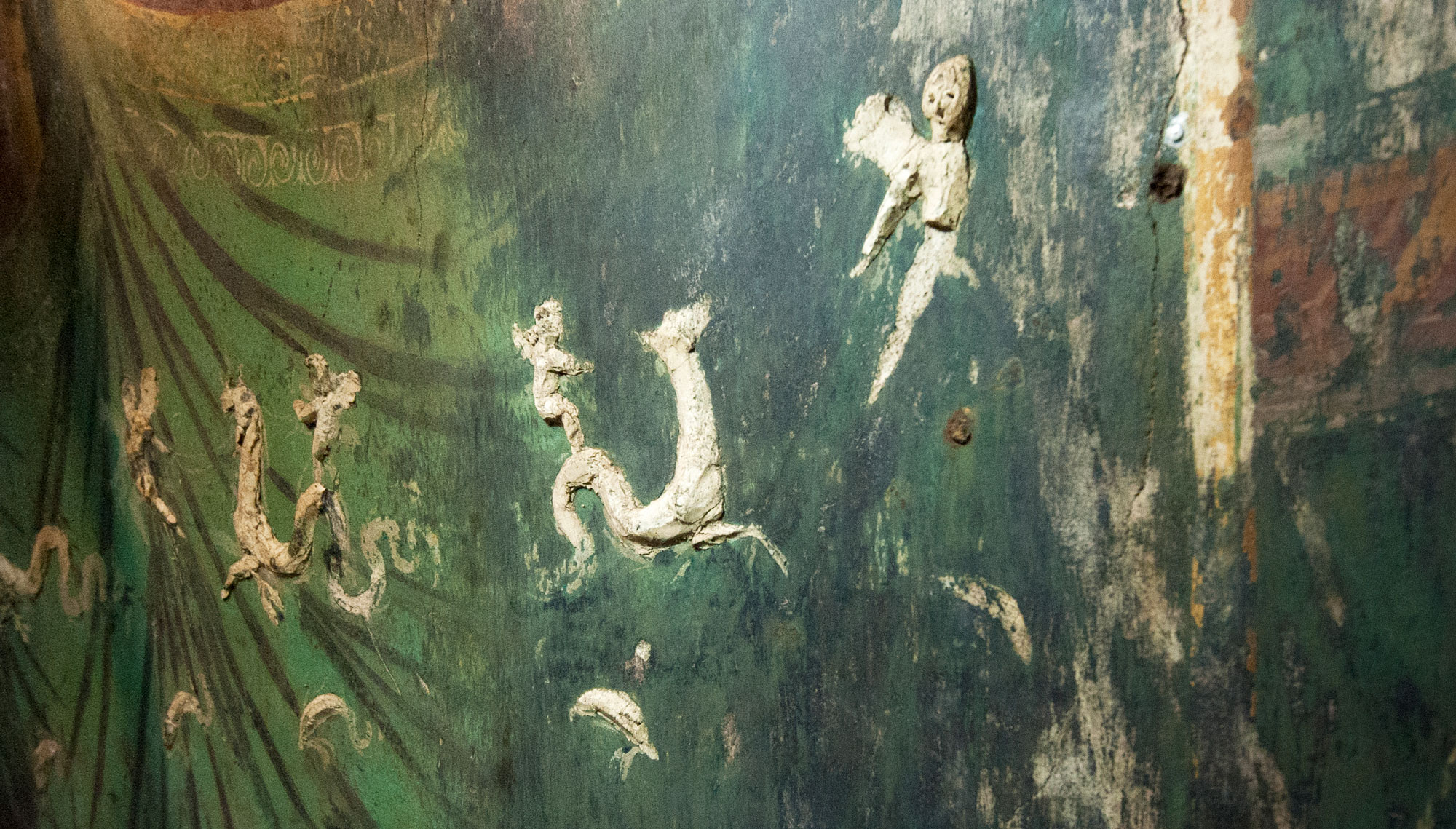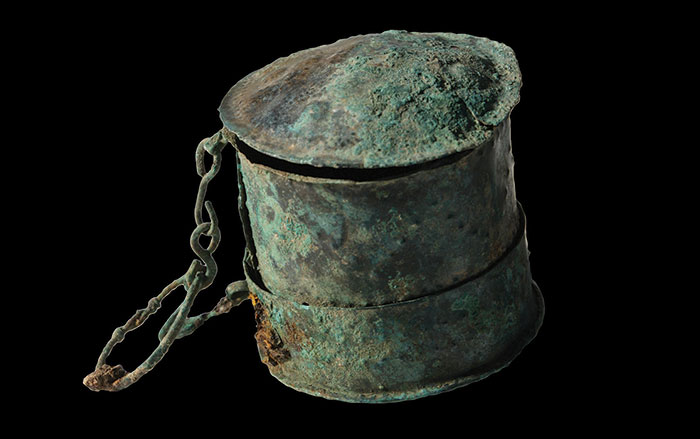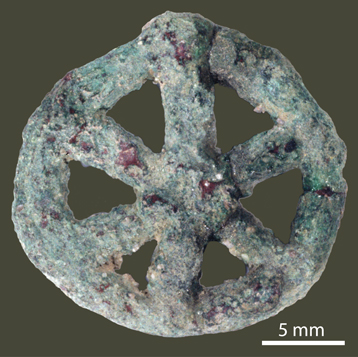
PARIS, FRANCE—The Washington Post reports that a team of scientists used a full-field photoluminescence technique to examine the molecular structure of a 6,000-year-old amulet discovered in Pakistan at the Neolithic site of Mehrgarh. Using a powerful synchrotron beam, the researchers found copper oxides inside the amulet that have a different structure than the corrosion covering the object. Mathieu Thoury of the European Ipanema laboratory suggests the early metallurgists may have been trying to cast the amulet with pure copper, but admitted some oxygen during the production process that produced the microscopic bristles seen in the amulet’s interior. In addition, the amulet is not symmetrical, which also supports the idea that it was probably cast as a single piece through lost-wax casting. “It is not the most beautiful object, but still it holds so much history,” said Thoury. “It shows how the metalworkers at the time were so innovative and wanted to optimize and improve the technique.” To read about a Late Roman amulet, go to “Artifact.”



